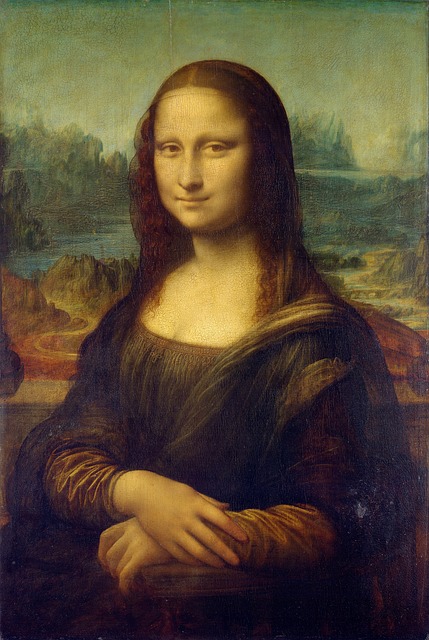# The Intersection of Art and Technology: How AI is Redefining the Creative Landscape
The convergence of art and technology has long been a subject of fascination, with each discipline influencing and enhancing the other. In recent years, artificial intelligence (AI) has emerged as a transformative force within the creative landscape, reshaping how artists conceptualize, create, and distribute their work. This article explores the multifaceted relationship between AI and art, examining how this technology is not only facilitating new forms of expression but also challenging traditional notions of creativity and authorship.
## The Rise of AI in Artistic Creation
Artificial intelligence is increasingly being utilized as a tool for artistic creation, enabling artists to explore new dimensions of their work. For instance, AI algorithms can analyze vast datasets of existing artworks to generate novel compositions, styles, and even entire pieces. These algorithms, often based on neural networks, learn from the patterns and characteristics of existing works, allowing them to mimic or innovate upon established artistic styles. This capability has led to the emergence of AI-generated art, which raises questions about originality and the role of the artist.
In addition to generating visual art, AI has also made significant inroads into music and literature. Composers can now use AI systems to create unique melodies or harmonies, while writers can leverage AI to generate text that mimics various literary styles. This collaborative relationship between human creativity and machine intelligence is redefining the boundaries of artistic expression. Artists who embrace AI often find themselves in a position to push their creative limits, experimenting with forms and ideas that might have been previously unattainable.
Moreover, the integration of AI into the creative process is not solely about automation; it also serves as a catalyst for human creativity. Many artists view AI as a partner rather than a replacement, using the technology to augment their artistic vision. By collaborating with AI, artists can explore uncharted territories, leading to innovative outcomes that reflect a fusion of human intuition and machine learning. This symbiotic relationship has the potential to inspire a new generation of artists who are adept at navigating both creative and technological landscapes.
## Redefining Authorship and Originality
The advent of AI-generated art inevitably raises critical questions regarding authorship and originality. Traditionally, the artist has been seen as the sole creator of a work, imbued with intent and personal expression. However, when an AI system generates art, the lines of authorship become blurred. Who, if anyone, deserves credit for a piece created by an algorithm? This dilemma has sparked debates within the art community, prompting discussions about the nature of creativity itself.
In some cases, artists have chosen to embrace this ambiguity, presenting AI-generated works as collaborative efforts. For example, renowned artists like Refik Anadol and Mario Klingemann have publicly acknowledged the role of AI in their creative processes, emphasizing the importance of human oversight and direction. Such collaborations challenge the notion of the solitary genius and highlight the collective nature of creativity in the digital age.
Additionally, the rise of AI-generated art has prompted a reevaluation of what constitutes originality. In a world where algorithms can remix and reimagine existing styles, the concept of originality becomes more fluid. This shift has led to a broader understanding of artistic influence, as artists are increasingly inspired by the vast array of AI-generated works available to them. As a result, the art world is witnessing a democratization of creativity, where diverse voices and styles can coexist and inspire one another.
## The Impact on Art Distribution and Accessibility
AI is not only transforming the creation of art but also revolutionizing how it is distributed and accessed. The digital age has already altered the landscape of art distribution, but AI is taking it a step further by enabling personalized experiences for audiences. Algorithms can analyze user preferences and behaviors to curate tailored art recommendations, making it easier for individuals to discover new artists and styles that resonate with them.
Moreover, AI-powered platforms are democratizing access to art, allowing emerging artists to showcase their work to a global audience. Online galleries and marketplaces leverage AI to connect artists with potential buyers, streamlining the process of art sales. This shift is particularly beneficial for underrepresented artists who may not have had the opportunity to reach wider audiences through traditional galleries.
Furthermore, AI is enhancing the experience of viewing art. Augmented reality (AR) and virtual reality (VR) technologies, powered by AI, allow audiences to engage with art in immersive ways. Museums and galleries are increasingly adopting these technologies to create interactive exhibits that invite visitors to explore artworks from new perspectives. This innovative approach not only enriches the viewing experience but also fosters a deeper appreciation for the artists and their creative processes.
## Conclusion: Embracing the Future of Creative Collaboration
As AI continues to evolve, its impact on the art world will undoubtedly deepen and expand. The intersection of art and technology presents both challenges and opportunities, prompting artists, critics, and audiences to reconsider their understanding of creativity and expression. While questions surrounding authorship and originality persist, the collaborative potential of AI offers exciting possibilities for artistic innovation.
In embracing AI as a partner in the creative process, artists can unlock new dimensions of their work, pushing the boundaries of what is possible. The future of art lies in this dynamic interplay between human creativity and machine intelligence, where the two can coexist and inspire one another. As we move forward, it is essential to foster an open dialogue about the implications of AI in art, ensuring that the creative landscape remains inclusive, diverse, and vibrant. The journey of redefining art through technology is just beginning, and it promises to be a fascinating exploration of human ingenuity in the age of artificial intelligence.

